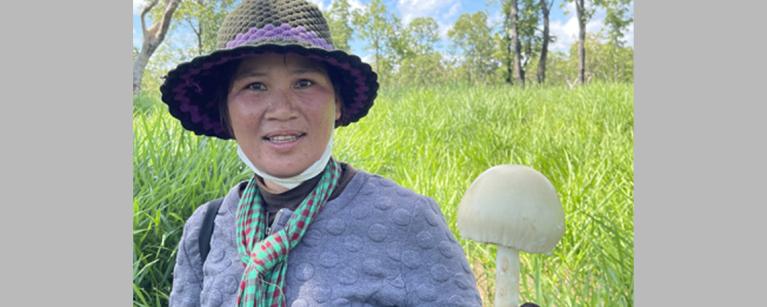In the remote reaches of Cambodia’s Oddar Meanchey province, the Sang Rukhavorn Community-Protected Area is paving a hopeful path toward sustainability, economic resilience, and environmental stewardship.
Spanning over 18,261 hectares of forest, this community-led conservation effort demonstrates how grassroots governance and inclusive forest management can empower local livelihoods while safeguarding biodiversity.
The community is home to more than 1,200 active members, 60% of them are women, who play a vital role in decision-making and daily forest activities. Their work focuses on non-timber forest products (NTFPs), which are seasonally abundant and critical to survival, particularly in times of agricultural uncertainty. These include bamboo and bamboo shoots, wild mushrooms like the sour and peacock varieties, wild fruits and vegetables, firewood sourced from deadwood, and traditional medicinal plants used in local remedies.
For households in Sang Rukhavorn, the forest is more than a source of cultural identity—it’s an economic safety net. During the rainy season, mushroom harvesting alone can generate up to 100,000 riels daily for community members, providing essential supplemental income and improving food security. Many families have come to rely on these natural products to stabilize their earnings, especially in the face of unpredictable weather patterns and agricultural risks.
To protect and enhance these resources, the community—supported by the Village Support Group and Oxfam’s Climate Resilience for All project funded by the Government of Ireland—has implemented a series of environmental and governance initiatives. Tree-planting campaigns promote afforestation and restore degraded areas, while systematic patrols help curb illegal logging and poaching. Structured harvesting plans ensure that forest products are collected sustainably without compromising long-term availability, and community education fosters shared responsibility for forest health.
“Women now have reliable income. This helps reduce migration and boosts our resilience to climate change.”
The effects are not only ecological but deeply personal. “Patrolling has helped us protect our forest from illegal activities and keep resources available for everyone,” said Mr. Vong Soung, the dedicated head of the forest patrol team. His work is echoed by other community members like Ms. Sina Bin, who emphasized how NTFPs have especially benefited women.
Sang Rukhavorn is a striking example of what happens when communities are empowered to manage their own natural resources: livelihoods improve, ecosystems recover, and inclusive development flourishes. By weaving together traditional knowledge, environmental safeguards, and equitable governance, this protected area offers a replicable model for forest-dependent communities across Cambodia—and far beyond.
